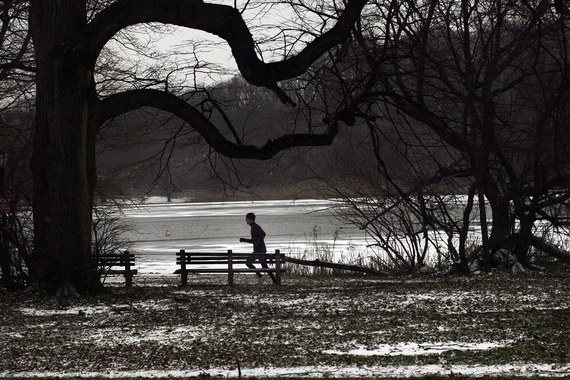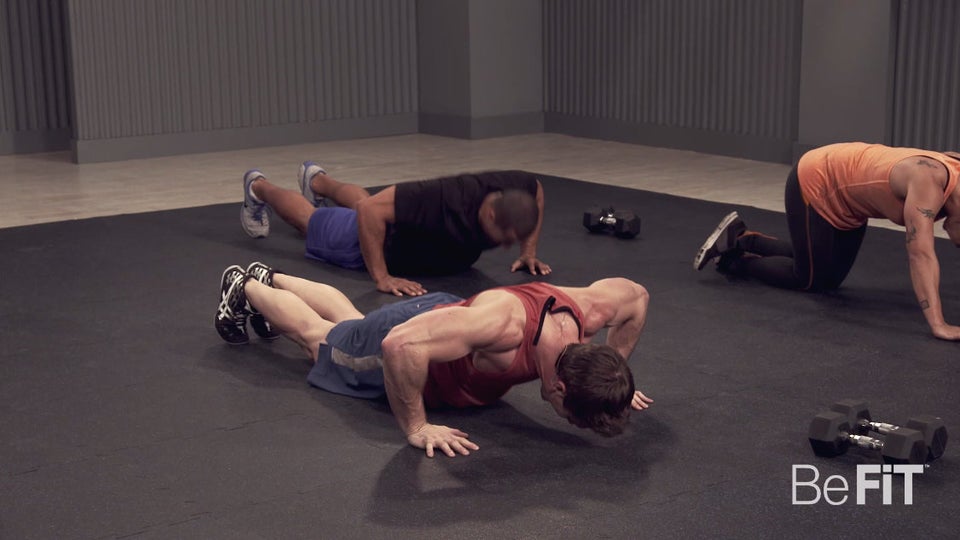By Samuel Blackstone for DETAILS.
If you've ever exercised in the cold, you know the sensations. Your muscles feel tighter. Your toes and hands go numb. The cold air rushing through your mouth and nose, down your windpipe, and into your lungs can feel harsh and, at times, painful. Afterward, you may have a slight, sometimes dry, sometimes wet cough. These sensations can cause wonder, and worry. "Is it bad to work out in the cold?" you may ask yourself. "Are my muscles supposed to feel this way? Is the cold air doing harm to my lungs and body?" We spoke with Dr. Sean Robinson of the Oregon Health and Science University, an avid winter runner with a Certificate of Added Qualification in sports medicine, for some answers.
Stretch Smart
No matter the temperature, before you workout, you need to warm up. But, when it's cold, it's doubly important. "Muscle contraction is negatively affected by temperature," Robinson explains. "The stiffness that you feel in the cold weather is related to this issue. The thought is that the muscle has a harder time getting oxygen from your blood in colder temperatures and your muscles need oxygen to contract, thus making contraction more difficult." So, how do you counteract the tightness and make sure it doesn't turn into pain and injury? Dynamic stretching.
"The notion of stretching before running is often debated," Robinson states. "There are a group of experts who feel that injury prevention is not affected if you stretch prior to exercising, and a group that feels it helps. Most will agree that dynamic stretching is better than static stretching. Cold weather will generally make you feel stiff, and a gentle dynamic stretching routine can do wonders for your muscles." When it's cold out, Robinson prefers warming up outdoors to prepare his body for the weather.
Listen to Your Lungs
Your muscles aren't the only thing affected by the cold, though. The cold, dry air has been known to cause pain in people's throats and lungs, and though it isn't always a sign of something serious, it's worth monitoring. "Your lungs function as your natural air filter and humidifier," says Robinson. "There are some athletes who are prone to bronchospasm (the small airways in your lungs will spasm and shrink), and this can cause pain, coughing, and shortness of breath. Other individuals may get an initial bronchospasm but their body will normalize and allow them to continue." If coughing, shortness of breath, or any pain continues, Robinson advises talking to your doctor.
Hydrate to Avoid Hypothermia
When you exercise in warm weather, your body has to work especially hard to keep your body cool. You sweat, you cool down, you get thirsty, you drink. In cold weather, the burden isn't as extreme, you tend not to notice the sweat under your layers, and as a result, you can forget to stay hydrated. "Hydration is just as important during cold weather as warm," Robinson explains. "You sweat more than you realize. The risk of hypothermia increases with dehydration, so be sure to drink even if you're not thirsty." If you run with a reservoir, Robinson's trick is to blow air into the tube after you take a sip to ensure the tube is full of warm air, not freezing water.
Dress for the Elements
Another key to avoiding hypothermia, or general coldness that can lead to sickness or numbness in your extremities, is wearing the right clothing. Pure cotton is a no-go because while it pulls the sweat from your body, it doesn't evaporate quickly, leaving you with a damp, cold layer. A cotton-and-polyester mix is what you want. "A polyester-cotton material provides the better combination of pulling sweat and enhancing evaporation to keep you warm, dry, and comfortable," says Robinson. "Layering an insulated wind-resistant shell with a sweat-wicking base is advised." Robinson also mentions that if you're feeling a little under the weather, you can still exercise in the cold, but pay attention to what your body is saying. However, if you have a fever over 100.4 F, take a day off, as exercising with a fever can put you at risk for heat illness.
Finally, once you've finished your workout, be sure to get inside and change into dry clothes as quickly as possible. If you're going to be outside for a while afterward, bring a towel to dry off and some extra layers to maintain your body's temperature. Oh, and if your throat is a bit parched or your body is a bit cold, try a hot beverage. Gin and tea, anyone?
More from DETAILS:
Also on HuffPost:

